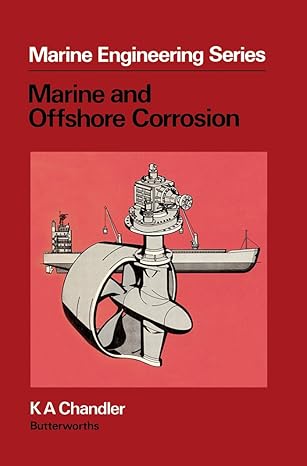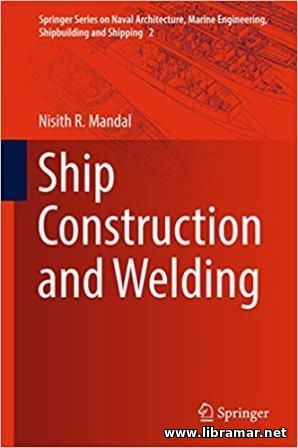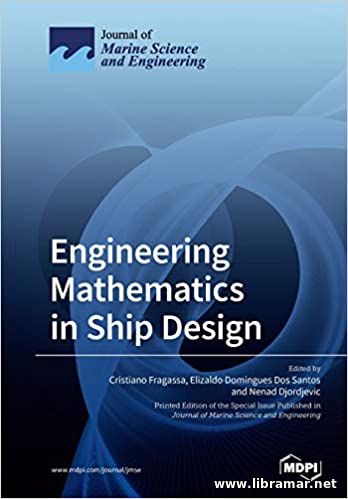 This book, "Marine and Offshore Corrosion," offers a clear understanding of corrosion control strategies specifically tailored for marine environments, with emphasis on economic viability. It elucidates the underlying electrochemical and mechanical processes that contribute to corrosion, including erosion, abrasion, and wear.
The text highlights the critical role of economic assessments in erosion control design, along with structural integrity, construction schedules, material sourcing, and overall costs. It provides in-depth analysis of the marine environment, including seawater characteristics, temperature fluctuations, dissolved gases (such as hydrogen sulfide and carbon dioxide), electrical conductivity, and biofouling.
Discussion is given to the process involved in materials selection tailored to the marine environments and the text outlines appropriate methods for steel surface preparation prior to painting, optimal paint selection, and considerations for the use of metallic coatings. Key coating selection aspects include cost-effectiveness, predicted service life, adhesion quality, moisture resistance, elasticity, chemical stability, impact resistance, durability against bacteria. The book also addresses maintenance considerations, covering environmental impacts, quality of applied initial treatments, structure construction characteristics, design criteria, purpose suitability.
"Marine and Offshore Corrosion" is organized and designed to provide engineers and designers, irrespective of corrosion specialized training, an overview of corrosion problems and resolutions. Additionally, this text is also be useful to those engineers with general interest in structure, building, or machinery maintenance specially those located near coastal areas.
 Cathodic protection is a crucial technique for safeguarding structures and ships from the corrosive impact of seawater. The design of these systems greatly influences the overall lifespan of a structure, with poor designs often incurring significantly higher costs compared to optimized solutions.
Incorrectly designed systems can lead to overprotection, resulting in paint blistering and accelerated corrosion of some alloys; underprotection, which causes structural corrosion; or stray current corrosion affecting nearby structures. The first ASTM symposium dedicated specifically to cathodic protection in seawater was held on November 3, 1998, in Norfolk, Virginia.
The goal of this symposium was to gather and present all relevant criteria and principles for designing both sacrificial and impressed current cathodic protection systems for structures and vehicles in seawater. Due to the complexity of the subject, it was impossible to cover everything in a single day. The papers included in this Standard Technical Publication (STP) are noteworthy because they encapsulate the main philosophies behind seawater cathodic protection system design. The inaugural paper by Hartt introduces the latest method for determining cathodic protection current requirements for marine structures.
Known as the Slope Parameter Approach, this method provides a more precise way to facilitate the formation of calcareous deposits compared to traditional techniques. Recently, this approach has served as the foundation for developing a standard by NACE International. The U.S. Navy has likely created more cathodic protection systems for ships than any other organization.
Recently, the Navy has started utilizing physical scale modeling to accurately position reference cells and anodes, as well as to identify the optimal system size and capacity. The paper by Lucas and colleagues describes the Navy’s methodology for testing these scale models and explains how the results are applied to actual ship designs.
 The American Navy is currently encountering significant challenges in acquiring and maintaining the appropriate number and types of ships necessary to fulfill national security obligations. Warships are costly, often amounting to billions of dollars, which forces the Navy to make difficult decisions each year about which vessels to purchase with limited defense budgets. These challenges would be formidable under stable circumstances.
However, the changing landscape of adversaries, mission requirements, and advancing technologies necessitates new capabilities for naval vessels. Given the steep expenses associated with procuring new warships, the Navy aims to prolong the service lives of existing ships by modifying them to address emerging threats, undertake new missions, and integrate advanced technologies.
Nevertheless, such modernization efforts are also costly and may be limited by existing support systems and the ships' configurations. The essential concepts of flexibility and modularity have been significantly promoted as potential strategies to decrease both the time and expense involved in modernizing active ships and to better prepare for future uncertainties.
The Navy has implemented these ideas in various programs, and they are increasingly being acknowledged and incorporated into ship design and construction initiatives. However, modularity and flexibility can mean different things to different stakeholders, and they may not, by themselves, ensure future adaptability. Additionally, there are obstacles to the broader application of modularity and flexibility across different classes of ships.
 For more than forty years, John Gaythwaite's "Design of Marine Facilities" title has stood as a premier reference for the engineering and design of ports, harbors, and marine terminals. The third edition upholds this distinguished tradition, offering precise and authoritative insights that civil engineers need for constructing and maintaining the infrastructures essential for berthing, mooring, and repairing ocean-going vessels.
The author delves into a broad range of topics critical to the field, including, but now limited, to the ship characteristics and various design features of facilities, different loads and fender systems, fixed structures, geotechnical design etc. This edition offers a comprehensive revision and substantial updates, with expanded coverage on critical topics such as seismic design, tsunami impacts, sea level rise, and the design of fixed aids to navigation.
It also incorporates new insights into the rehabilitation, maintenance, and repair of marine facilities, alongside facility inspection, assessment, and life-cycle asset management. With its practical perspective and clear explanations, "Design of Marine Facilities: Engineering for Port and Harbor Structures" is an indispensable resource for port authority engineers, marine terminal operators, marine contractors, port planners, and other industry professionals. Additionally, it serves as an excellent introductory text for students exploring the fundamentals of marine facility design.
 The present publication was written the address the various areas of the ship hull construction, covering literally everything starting from the types of ships and materials used for construction, and up to the welding technologies applied and quality control. The material is arranged in a very logical way and deals with the structural arrangement of the vessels featuring transverse and longitudinal; systems of framing, on the basis of the calculated service loads.
The author provides detailed and understandable explanations of the essential structural elements of the hull together with the most commonly used structural sub-assemblies. The construction of the ship’s double-bottom has been presented in detail along with the fore- and aft-end structures, midship section and other critically important areas. All materials normally used for the ship construction have been covered, including steel, FRP and aluminum alloys, with particular attention paid to the preparation of the construction materials, cutting and joining techniques, welding etc.
The formation of the residual stress in the hull structures has been addressed with the focus made on the buckling of thin metal panels caused by the welding. In short, all aspects of ship hull construction have been covered including the methods used for the nondestructive examination of the metal surfaces and welding seams.
 The content of the present publication of designing for strength is mainly intended to provide a good coverage of the strength related calculations for the general design to the standards considered suitable for the engineering courses. However decision was made by the author of the volume to skip the academic soil and fracture mechanics, advanced theoretical civil engineering, plasticity and other matters.
The original intention is to explain in details the main stress forms and then proceed to the critical examination of the associated material properties and relevant testing. After that the author explains the stress concentration followed by the information on the applications, with the latter being treated in fundamental terms, relevant aspects and procedures that are specific to the constructions and pressure vessels.
The volume concludes with the numerous real case studies providing additional information for easier understanding of the subject. A huge part of the material has been presented in a quite condensed format with some references made to the publications available today, all listed in a separate section, all of the references have been selected by the author of the book.
 With more than seventy percent of the surface of our planet covered by the water, the maritime transportation of people and goods is deservedly considered one of the critically important ways of moving them all across the continents. The international maritime transportation has always been in the extensive use, throughout the history of the mankind since it allows numerous achievements that would otherwise not be possible in the other ways, including the technological, commercial, social and other areas.
This has eventually resulted in the necessity of getting to the better understanding of the ship design, starting from the very moment when the human decided to board the first boat. There have been thousands of ship designers engaged in the process of making the boats safer and faster.
However, it was always too difficult for the people to develop a due knowledge of all aspects of the marine engineering. This is where the engineering mathematics came to help them though the application of the math methods and different techniques of solving problems. In this edition of the “Engineering Mathematics” title the team of experts attempts to employ the subject knowledge in order to get proper recommendations related to the various areas of the ship design
 The FEM is considered one of the best numerical methods used to solve the differential equations describing many various engineering problems. This new publication is covering the fundamental theory of the final element method including appendices on each program. The authors have introduced the concepts of this method enabling engineers to use it efficiently and also to properly interpret the obtained results.
They will learn all finite elements including one, two and three dimensional elements. The book is written excellently; the readers will definitely enjoy the examples provided in the book and illustrating the concepts. The book has been found to be among the best available resources to learn the FEM, suitable for the graduate and undergraduate levels.
The content is perfectly organized and procedures are well explained and illustrated. Some of the relevant programs including MATLAB and ANSYS have also been covered and provided with detailed explanations. This is highly recommended volume to the people willing to have a clear idea about the FEM and its applications and understand the fundamentals of this method to be able to apply it.
|







